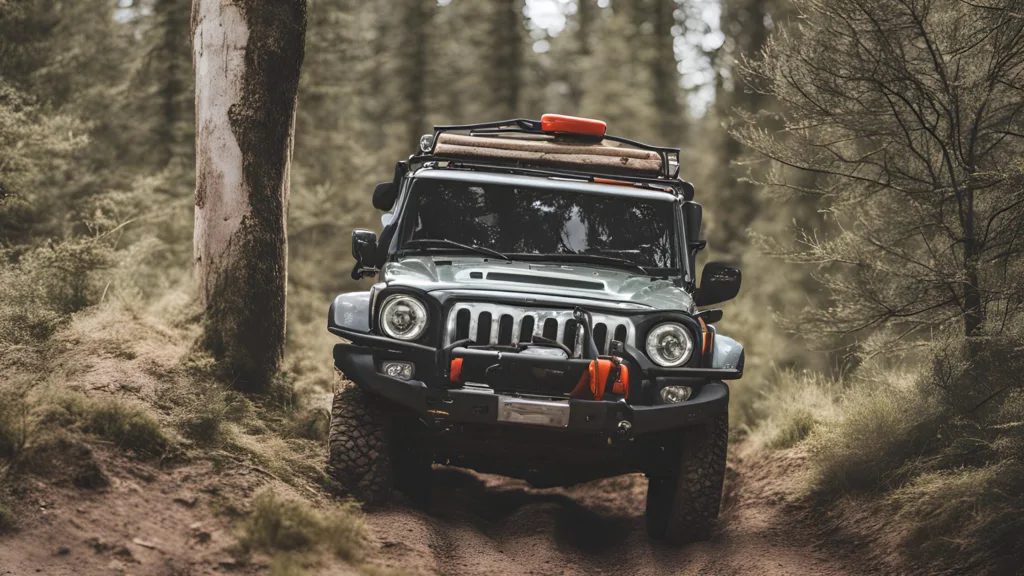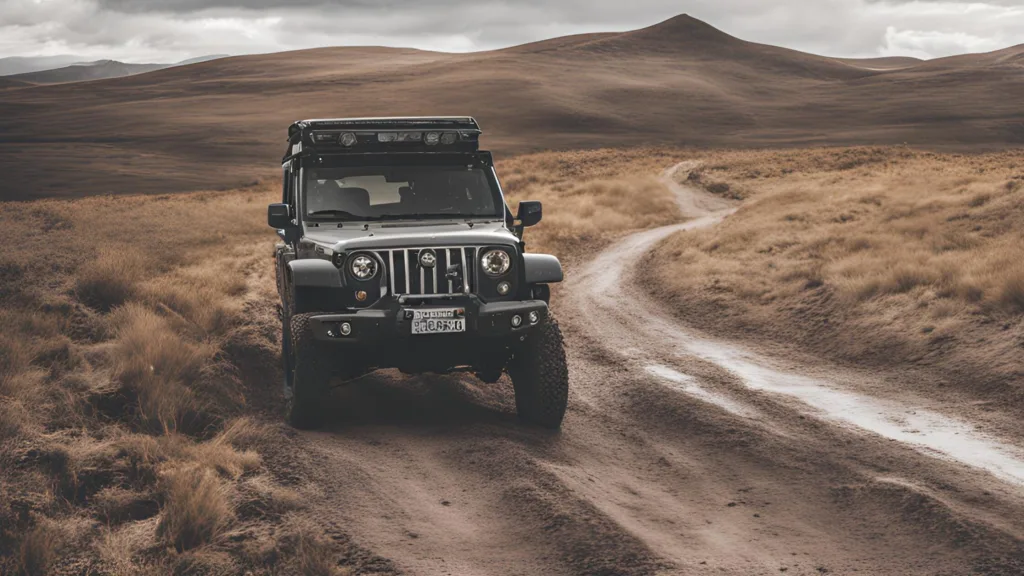Off-road navigation requires a map, compass, or GPS device, and the understanding of the terrain. Users should plan their routes and be aware of weather conditions affecting navigation.
Expert navigators know that traversing unknown terrains demands more than just intuition; it requires reliable tools and a strategic approach. Embarking on an off-road adventure is about piecing together the landscape with technology and informed judgment. To start, equip yourself with detailed maps and a functioning compass or a state-of-the-art GPS system designed for off-road use.
Understanding topographical features and being able to interpret contour lines can turn a challenging journey into a manageable expedition. Weather is a mercurial factor that can transform routes, turning dry paths into muddy obstacles or covering trails with snow; staying abreast of forecasts is crucial. Before setting out, familiarizing yourself with your equipment and environment ensures that your off-road escapades are both thrilling and safe. As you plan your route, be realistic about your capabilities and factor in emergency escape routes and potential rest points to enhance your adventure experience.

Thrills Of Off-road Exploration
The excitement of driving off the beaten path is unmatched in the world of outdoor adventures. Off-road exploration offers a unique blend of adrenaline and tranquility. It connects adventurers with rugged landscapes untouched by conventional travel. Here, enthusiasts embrace the call of the wild steering wheels in hand. Sights, sounds, and experiences found beyond asphalt boundaries tantalize the senses, promising new thrills with every excursion.
Why Off-road Adventures Captivate Us
Imagine a road without limits, a journey unrestrained by lines and signs. Off-road adventures captivate with the promise of freedom – a freedom that enlivens the spirit and challenges the body. Nestled within these untamed tracks are stories waiting to unfold, memories eager to be etched in the mind’s canvas.
- Feeling of conquest: Overcoming natural obstacles fuels a unique sense of achievement.
- Adrenaline rush: Every twist and turn brings a spike of excitement.
- Personal growth: Skills sharpen and confidence builds with each off-road challenge.
The Appeal Of The Uncharted Terrain
Uncharted terrain is a siren’s call for the explorer’s soul. Each pathless woodland, desert vista, and mountain pass extends an invitation for new exploits.
| Terrain Type | Features | Exploration Appeal |
|---|---|---|
| Woodland Trails | Dense forests, hidden paths | Intimate connection with nature |
| Desert Landscapes | Vast, open spaces, dunes | Extreme isolation and serenity |
| Mountain Tracks | Rough terrains, steep inclines | Epic vistas and challenging journeys |
The allure of the unknown propels adventurers into these realms. Hushed forests whisper secrets. Deserts dazzle with shifting sands. Mountains command respect with their towering presence. Across such variegated backdrops, off-road navigation is not just travel – it’s a foray into the heart of the extraordinary.

Preparation: Key To Off-road Success
Imagine tackling rough terrains without a hiccup. Preparation turns that into reality. Proper planning and the right equipment make off-road adventures safe and enjoyable.
Selecting The Right Vehicle For Off-road Travel
Choosing a vehicle for off-roading is like picking a trusty sidekick. It must handle tough challenges. Here are important criteria:
- Four-wheel drive: Essential for traction on rugged landscapes.
- High ground clearance: To avoid underbody damage.
- Durable tires: For better grip and puncture resistance.
- Powerful engine: To conquer steep climbs.
- Responsive handling: For navigating tricky paths.
Essential Gear For Navigating The Unknown
Going off-road? Take the right gear. Here’s a list:
| Gear Type | Why It’s Needed |
|---|---|
| Navigation tools | Maps and GPS keep you on track. |
| Recovery kit | For when you or a friend gets stuck. |
| First aid kit | Always be ready for medical emergencies. |
| Communication devices | To call for help when out of cell range. |
| Extra food and water | Stay energized and hydrated. |
| Emergency shelter | For unexpected overnight stays. |
Mastering Off-road Navigation
When you leave the beaten path, your navigation skills truly get tested. Off-road travels require a dependable way to find your location and destination. Great navigators combine the reliability of old-school tools with modern tech. They stay on track no matter where the adventure leads. Here are essential tips to become a master navigator off-road.
Traditional Map And Compass Techniques
Even with advanced technology, traditional navigation remains vital. Understanding how to use a map and compass can save you when batteries die or signals fade.
- Read Topographic Maps: Learn to interpret contour lines, symbols, and scales.
- Align Map and Terrain: Match your map’s landmarks with your surroundings for accuracy.
- Use the Compass: Determine your direction and follow bearings effectively.
- Triangulation: Pinpoint your position by taking bearings from known locations.
| Skill | Description |
|---|---|
| Orientation | Aligning map to Earth’s magnetic north |
| Setting a Bearing | Plotting direction of travel on the map |
| Pace Counting | Estimating distance by steps |
Leveraging Gps And Digital Mapping Tools
GPS devices and apps are game-changers for off-road navigation. They offer real-time data and vital information about unfamiliar terrains.
- Select the Best GPS Device: Pick a device that withstands harsh conditions and has a long battery life.
- Understand Your GPS Features: Learn to use waypoints, tracks, and route planning capabilities.
- Bring Backup Power: Always carry extra batteries or power banks.
- Use Apps Wisely: Download offline maps and satellite imagery before heading out.
By combining these tools, you stand the best chance of a safe, enjoyable off-road trip. A map provides the big picture, a compass gives direction, and GPS offers precise location data. Master these skills and tools, and you’ll be an off-road navigation pro!
Overcoming Common Off-road Obstacles
Off-roading thrills with adventure but also brings challenges.
Rocks, mud, and sand test your skills and vehicle.
Tackling these terrain obstacles requires knowledge and preparation.
This section guides you through, whether it’s scaling a steep incline or braving a sudden storm.
Strategies For Navigating Difficult Terrains
Mastery over rough paths is crucial for any off-road enthusiast.
Below are steps for achieving this:
-
Assess the Terrain: Before diving in, analyze the area.
Look for stable ground and driveable routes. - Go Slow: Take your time. A slow speed maintains control.
-
Use the Right Gear: Switch to a low gear for power.
High gears are for smoother surfaces. -
Tire Pressure Matters: Adjust pressure based on conditions.
Lower it for sand, keep it higher for rocky areas. -
Don’t Spin Wheels: If you get stuck, spinning wheels dig deeper holes.
Gently rock the vehicle or use traction aids.
How To Handle Unexpected Weather Changes
Weather can shift quickly. Being prepared makes all the difference.
- Stay Informed: Check forecasts beforehand. Have a weather app ready.
- Equip Your Vehicle: Carry chains for snow. Have a winch for emergencies.
- Adjust Driving Style: Rain means slippery surfaces. Snow demands careful throttle use. Adapt as needed.
- Carry Supplies: Pack blankets, food, and water. These are lifesavers if you’re stranded.
- Secure Your Gear: Ensure cargo is tied down. Sudden moves can shift loads.
Leave No Trace: Ethical Off-roading
We cherish the thrill of off-road adventures. Yet, our tracks in the wild should not harm nature. Leave No Trace: Ethical Off-Roading invites us to explore without leaving scars on the environment.
Environmental Considerations While Off-roading
- Stay on Designated Trails:
Prevent ecosystem damage. Keep your vehicle on marked paths.
- Avoid Sensitive Areas:
Protect wildlife homes. Steer clear of fragile habitats.
- Respect Living Creatures:
Wildlife is precious. Give animals space to live undisturbed.
- Control Waste:
Trash harms nature. Bring back everything you carry in.
- Mindful Fuel and Fluid Leaks:
Oil can pollute. Check your vehicle for leaks before journeys.
Practicing Sustainable Off-road Navigation
- Plan Your Route:
Know your path. This reduces the need to backtrack and erode new areas.
- Use Durable Surfaces:
Drive on hard ground. Surfaces like rock and gravel withstand vehicles better.
- Low Impact Camping:
Choose established sites. This avoids damaging untouched land.
- Share the Trails:
Remember others enjoy the land. Yield to hikers, bikers, and wildlife.
- Educate Your Group:
Spread knowledge. Inform your companions about ethical off-roading.
Sharing The Experience: Social Aspects Of Off-roading
Sharing the experience in off-roading creates lasting bonds and unforgettable memories. When the trails get tough, the shared triumphs and challenges forge a unique community. Off-road enthusiasts often come together to tackle the terrain. They share tips, stories, and camaraderie. This social dimension turns individual adventures into collective epics. Let’s explore how off-roading enthusiasts can build and enrich their community with every expedition.
Building A Community Of Off-road Enthusiasts
Creating a community around off-roading means connecting with people who share your passion. It’s more than just driving on rough trails; it’s about supporting and learning from each other. Here are ways to bring off-roaders together:
- Join or start local off-road clubs: Meet people who love the mud and rocks as much as you do.
- Attend events and meetups: Trade stories, gain insights, and plan adventures with others.
- Participate in online forums and social media groups: Share photos, advice, and organize outings from anywhere.
- Host workshops or skill-shares: From navigation to vehicle maintenance, everyone has something to learn or teach.
Tips For Organizing Group Off-road Trips
Planning a group trip takes effort but rewards you with shared adventure. Here are tips to make it successful:
- Pre-plan the route: Ensure it suits the group’s skill level and interest.
- Set clear expectations: Discuss what each participant should bring and how to prepare their vehicles.
- Communicate effectively: Use radios to keep in touch on trails where cell service may fail.
- Designate roles: Appoint a lead and sweep driver to help manage the convoy.
- Establish safety protocols: Have a first-aid kit, recovery gear, and emergency plans in place.
- Leave no trace: Teach respect for nature, clean up after the trip, and leave the trails as you found them.

Frequently Asked Questions For Off-road Navigation Tips
What Essentials Are Needed For Off-road Navigation?
For off-road navigation, essentials include a reliable GPS device or app, physical topographical maps, a compass, and vehicle tools. It’s also wise to carry extra food, water, and emergency supplies.
How Do I Choose The Best Off-road Gps?
Select an off-road GPS that offers detailed topographic maps, robust construction, and long battery life. Look for devices with features like track recording, waypoint marking, and offline accessibility for remote areas.
Can Smartphone Apps Be Reliable For Off-roading?
Smartphone apps can be reliable for off-roading if they provide offline map access and GPS tracking. Choose apps designed for outdoor navigation with updated and detailed terrain information.
What Are The Top Techniques For Off-road Navigation?
Top off-road navigation techniques include mastering map reading, using a compass, GPS waypoint navigation, and understanding natural landmarks. Combine these with good observation skills and situational awareness.
Conclusion
Exploring the wild through off-roading is thrilling. Embrace these guidelines to navigate terrain safely and efficiently. Remember, preparation trumps spontaneity. Equip your adventure with the right tools and knowledge. Step out with confidence, ready for the unbeaten path. Your next journey awaits – chart it wisely.


